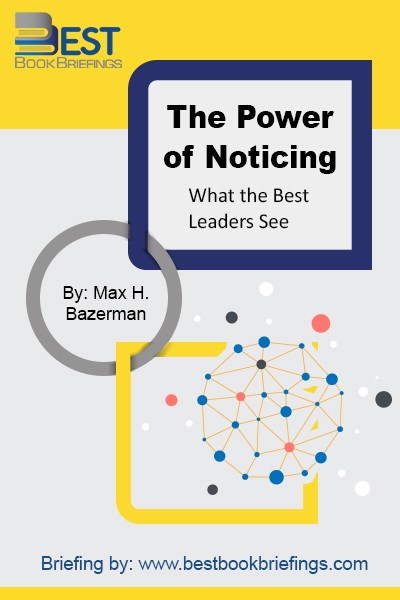The Neuroscience of Leadership
Mindful Change in Practice
Editorial Review
Businesses everywhere face this kind of problem: success isn’t possible without changing the day-to-day behavior of people throughout the company. But changing behavior is hard, even for individuals, and even when new habits can mean the difference between life and death. So what about changing the way a whole organization behaves? The poor track record in this area tells us it’s a challenging aspiration at best. During the last two decades, scientists have gained a new, far more accurate view of human nature and behavior change because of the integration of psychologythe study of the human mind and human behaviorand neuroscience, the study of the anatomy and physiology of the brain.
Book Reviews
Books on Related Topics

The role of noticing is deeply rooted in the rapidly evolving field of behavioral decision research. It has diffused to a number of other fields, including behavioral economics, behavioral finance, behavioral marketing, negotiation, and behavioral law. The field is rooted in the concept of bounded rationality and in scientists’ work on

In this leadership book, 42 Rules for Creating WE offers new insights from thought leaders in neuroscience, organizational development, and brand strategy, introducing groundbreaking practices for bringing the spirit of WE to any organization, team or cause.

This is a classic book that delves into the nifty gritty that is involved in leadership. Being a book that is an update of its previous editions, it is a modern approach that includes the modern leadership methods and the attributes that a leader requires to be successful in the 21st

Engaging the reader in a lively conversation about how we think, Kahneman reveals where we can and cannot trust our intuitions and how we can tap into the benefits of slow thinking. He offers practical and enlightening insights into how choices are made in both our business and our personal lives-and




